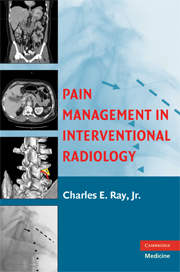Preface
Published online by Cambridge University Press: 04 September 2009
Summary
Everyone feels pain. Everyone feels physical pain, to one degree or another. Pain, or simply the thought of being in pain, often changes our actions as no other physical sensation can. While often a necessary physical response to keep us out of harm's way (touching the hot handle of a pot, for example), pain becomes its own entity when it is associated with an underlying disease process.
Why is pain associated with disease? From an evolutionary perspective, was pain necessary for some reason to let the individual know that something was amiss (even though nothing could be done about it)? Was disease-associated pain used for some other, perhaps subconscious, purpose? Perhaps understanding the “why” is not all that important in today's world; after all, the bottom line is that pain simply hurts! And disease-associated pain can hurt most of all. We as health care providers should be able to do something about it – shouldn't we?
From one perspective, medicine (traditional or “Western” medicine in particular) has done relatively little to abate pain. Most of the major advances in pain control over the past 150 years have been in the field of pharmacology; general anesthesia is the prime example of pain control. With the exception of medications, however, little progress has been made in managing disease-associated pain over the past few decades. More work – much more work – remains. Shouldn't minimaliy invasive techniques spearhead this effort?
- Type
- Chapter
- Information
- Pain Management in Interventional Radiology , pp. ix - xPublisher: Cambridge University PressPrint publication year: 2008



